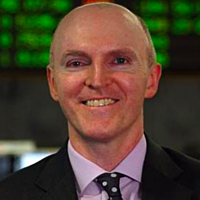The Aussie dollar's more telling story

Westpac Bank
The Aussie dollar’s dip under 71 cents this week provided great fodder for newswires, as it printed lows since February 2016. But the more telling story is probably how little time it spent at such lows, and that it is higher over the week, close to 72 cents.
Domestically, the news flow overall was a little firmer. The fall in both business and consumer confidence was unsurprising given the turmoil in Canberra and mortgage rate rises. But critically, the business conditions index actually improved in the August NAB survey to +15, well above the long term average of +6.
Australia’s August employment report, meanwhile, provided a large upside surprise, with the steep 44,000 jump in jobs keeping annual job creation at a swift 2.5% and the unemployment rate at 5.3%, a 6 year low. Job creation is not as rapid as in 2017 but this report will surely be welcomed by the RBA as affirmation of its “glass half full” outlook on the economy.
Still, as we have noted often in recent months, with the RBA firmly on hold, global factors tend to be the main driver of AUD/USD movement. Commodity prices are mixed, with metals prices struggling in recent weeks but energy prices trending higher, iron ore choppy but thermal coal prices at 6 year highs. Westpac’s daily index of Australia’s export-weighted commodity price basket is grinding higher, in contrast to the recent AUD/USD decline.
But the sharpest bounce in AUD/USD’s nascent recovery this week came on news that the US was willing to discuss trade policy with China before imposing further tariffs. The Aussie has been the market’s clear choice among major currencies as a proxy for the state of US-China trade relations. China has welcomed the offer of talks. This should support the Aussie near term though it did slip a little when President Trump tweeted that the US was not under pressure to deal with China.
In the week ahead, US-China trade talks will remain in focus. Australia’s calendar is limited to the minutes from the RBA’s September meeting, while European calendars are also low key in the wake of the steady policy decisions at the Bank of England and ECB this week.
In the US, there are more business surveys which should remain upbeat. This week a survey reported US small business confidence was the highest in the history of the series which began in 1974. However, we will not hear any more from Fed officials, as they are in a media blackout period ahead of the 26 September FOMC meeting.
So long as US-China trade talks are not derailed and commodity prices remain supportive, the Aussie dollar could press a little higher in the week ahead. It might be helped by the fact that the US dollar is already finding support from markets fully pricing a September rate rise, along with an 80% chance of another move in December. To rally above 73 cents though might require a real breakthrough in trade talks, not just their existence.
1 topic

Sean Callow is Westpac Bank's Senior Currency Strategist, based in Sydney. Sean focuses on the Australian dollar and other G10 and Asian currencies. He has worked in strategy and economics roles in New York, London, Singapore and Melbourne.
Expertise

Sean Callow is Westpac Bank's Senior Currency Strategist, based in Sydney. Sean focuses on the Australian dollar and other G10 and Asian currencies. He has worked in strategy and economics roles in New York, London, Singapore and Melbourne.
